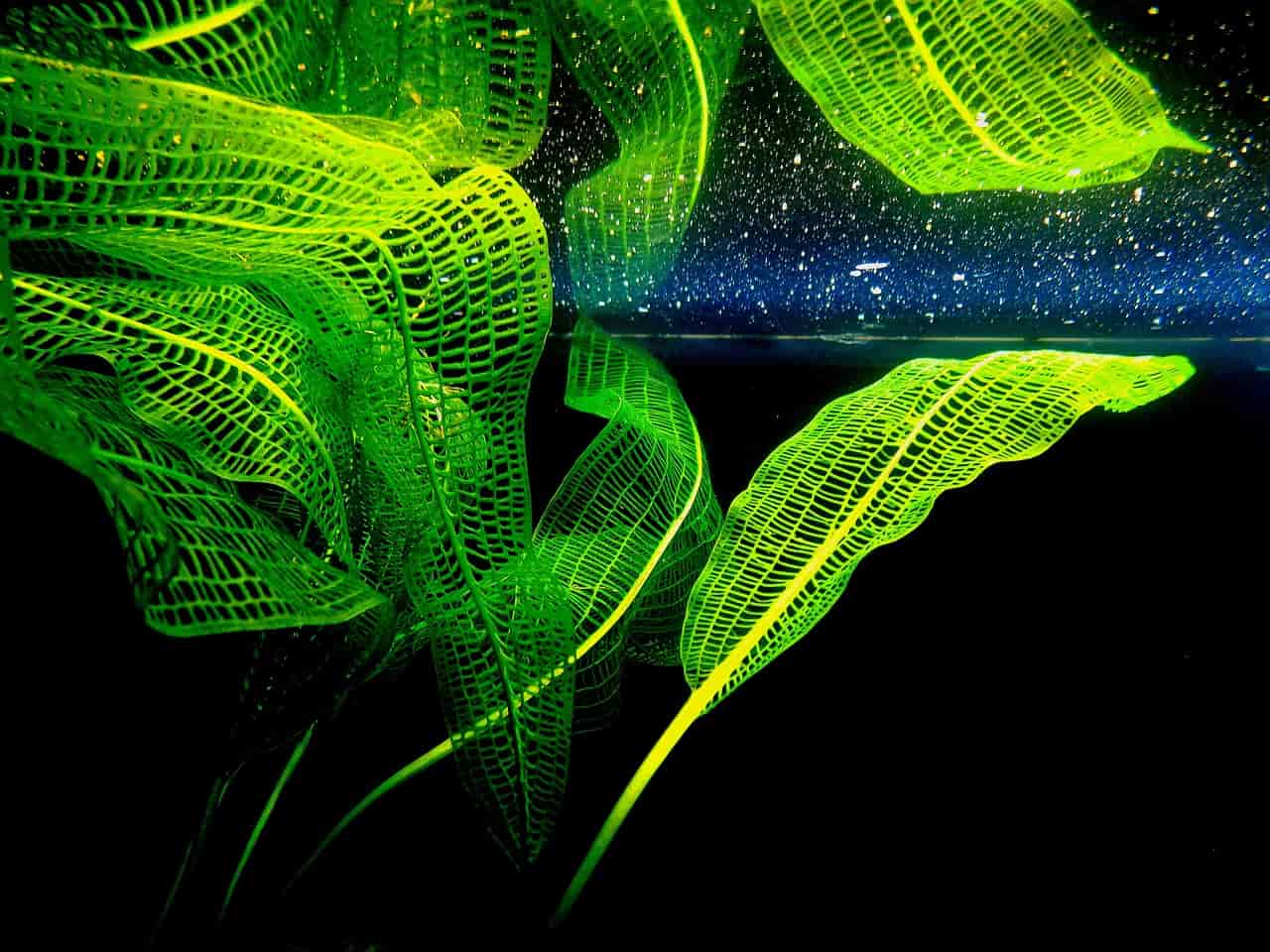Introduction to Madagascar Lace Plant
Welcome to the world of aquascaping, where art meets nature! If you’re an aquarium enthusiast looking to create a stunning underwater masterpiece, you’ve come to the right place. In this blog post, we’ll dive into the captivating beauty of the Madagascar Lace Plant and how it can enhance your aquascape like no other.
The Madagascar Lace Plant (Aponogeton madagascariensis) is a true gem in the aquatic plant kingdom. With its delicate lacy leaves and ethereal appearance, this plant adds an enchanting touch to any aquarium setup. Its unique characteristics make it a favourite among hobbyists who want their underwater gardens to stand out.
This aquatic wonder also provides numerous advantages for both fish and water quality. From oxygenation to natural habitat enrichment, this plant brings life and vitality to your tank in more ways than one.
So, if you’re ready to embark on a journey of creativity and tranquillity, join us as we explore everything you need to know about creating a stunning aquascape with Madagascar Lace Plant.
Benefits of Adding Madagascar Lace Plant to Your Aquascape
The Madagascar Lace Plant is a stunning addition to any aquascape, offering aesthetic appeal and numerous benefits for your aquarium. One of the key advantages of incorporating this plant into your setup is its ability to oxygenate the water. As it grows, the plant releases oxygen through its leaves, helping maintain a healthy environment for aquatic creatures.
This can help prevent algae growth and keep your tank clean and clear. Additionally, this plant provides hiding places for small fish and fry, creating a sense of security in their habitat.
The Madagascar Lace Plant adds visual interest with its intricate lacy leaves and offers natural shade for shy or delicate species that prefer dimmer lighting conditions. This can be especially beneficial if you have sensitive fish or plants in your aquarium.
Furthermore, adding the Madagascar Lace Plant to your aquascape can create a more naturalistic look by mimicking an underwater forest ecosystem. It adds depth and dimension, enhancing the overall aesthetics of your tank.
Integrating the Madagascar Lace Plant into your aquascape enhances its beauty, improves water quality, and provides essential benefits for aquatic life within your aquarium.
Essential Supplies for Successful Growth of Madagascar Lace Plant
When it comes to creating a stunning aquascape with Madagascar Lace Plant, there are a few essential supplies that you’ll need to ensure successful growth. First and foremost, you’ll need a suitable aquarium tank.
Next, you’ll need a high-quality substrate designed explicitly for aquatic plants. This will provide the necessary nutrients and support for the roots of your Madagascar Lace Plant. It’s essential to choose a substrate that is rich in minerals and has good water retention capabilities.
LED lights are recommended as they provide optimal spectrum and intensity for photosynthesis. Consider using an adjustable light fixture to customize the lighting conditions based on the needs of your lace plant.
To maintain water quality, investing in a reliable filtration system is essential. A good filter will help remove waste products from the water while providing oxygenation.
Choosing the Right Tank Setup for Your Madagascar Lace Plant
Choosing the correct tank setup for your Madagascar Lace Plant is crucial to ensure its healthy growth and thriving in your aquascape. Here are some tips to help you create an ideal environment for this beautiful plant.
Consider the size of your aquarium. It also allows for better water circulation, which benefits nutrient absorption.
Next, pay attention to lighting. This plant thrives in moderate to high light conditions, so ensure adequate lighting in your tank. LED lights are popular as they provide a spectrum similar to natural sunlight and can be adjusted based on the plant’s needs.
Water quality is another critical factor. The Madagascar Lace Plant prefers slightly acidic water with a pH between 6.5-7.5 and soft to moderately complex water (GH 3-8). Regular testing of water parameters and appropriate adjustments will ensure optimal conditions for the plant’s growth.
Filtration is essential as it helps maintain clean and oxygenated water while removing harmful substances that may inhibit plant growth.
Substrate choice plays a significant role in anchoring the Madagascar Lace Plant’s roots and providing essential nutrients. Opt for a nutrient-rich substrate like aqua soil or add root tabs if using inert substrates like gravel or sand.
By carefully considering these factors when setting up your tank, you’ll create an ideal habitat for your Madagascar Lace Plant to flourish within your aquascape.
Tips for Maintaining Healthy and Thriving Madagascar Lace Plants
Maintaining healthy and thriving Madagascar Lace plants is essential to create a stunning aquascape. These beautiful plants require special care to ensure their well-being in your aquarium.
1. Lighting: Provide adequate lighting for your Madagascar Lace plant. This species thrives under moderate to bright lighting conditions. Ensure the light intensity is sufficient, but be cautious not to expose them directly to intense sunlight, as it can cause leaf burn.
2. Water Parameters: Maintain stable water parameters for optimal growth of your Madagascar Lace plant. The ideal temperature range for this plant is around 70-82°F (21-28°C), with a pH level between 6-7.5 and hardness between 3-8 dGH.
3. Substrate: Choose a suitable substrate for your lace plants, such as nutrient-rich soil or gravel mixed with laterite clay. This will provide essential nutrients needed for their growth.
4. Fertilization: To promote healthy growth, supplement the substrate with root tabs or regularly add liquid fertilizers rich in iron and micronutrients.
5. Water Circulation: Adequate water circulation helps deliver oxygen and nutrients throughout the tank, benefiting the ecosystem’s lace plants and other aquatic organisms.
Remember that each aquarium setup may have specific requirements based on its size, filtration system, and inhabitants; therefore, it’s crucial to adapt these maintenance tips accordingly.
Creative Ways to Incorporate Madagascar Lace Plant into Your Aquascape Design
1. Driftwood Delight: One unique and creative way to incorporate the Madagascar Lace Plant into your aquascape design is by attaching it to a piece of driftwood. This plant’s delicate, lacy leaves create an ethereal look when paired with the rustic texture of driftwood. Simply tie or glue the roots of the lace plant onto the wood, and watch as it adds a touch of natural elegance to your aquarium.
2. Vertical Beauty: Another innovative idea is to use vertical spaces in your aquascape to showcase the beauty of the Madagascar Lace Plant. Attach small pieces of lace plants on suction cups or mesh grids and place them vertically along your tank’s back wall or side panels. This creates visual interest and adds depth and dimension to your overall design.
3. Floating Wonders: Consider allowing some Madagascar Lace Plants to float freely in your aquarium, creating a mesmerizing effect as they sway gently with water currents. You can let them roam freely across the surface or anchor them using small weights near their roots for added stability.
4. Terrarium Twist: Step outside traditional aquarium setups by incorporating a terrarium element into your aquascape design. Pairing Madagascar Lace Plants with terrestrial plants like mosses, ferns, orchids in a glass container can create an intriguing blend between land and water habitats.
5. Creative Centerpieces: Make a statement using large clusters of Madagascar Lace Plants as centrepieces within your tank layout.
These striking focal points draw attention while providing shelter for fish species that prefer hiding spots among dense vegetation.
Potential Challenges and How to Overcome Them
1. Maintaining Water Conditions: One potential challenge when caring for Madagascar Lace Plants is maintaining the right water conditions. These plants prefer slightly acidic to neutral pH levels and moderate water hardness. To overcome this challenge, regularly monitor your aquarium’s water parameters using a reliable testing kit. Adjust as needed by adding pH buffers or using reverse osmosis (RO) water if necessary.
2. Algae Growth: Another common issue in aquascaping is unwanted algae growth, which can compete with Madagascar Lace Plants for nutrients and light. To combat this challenge, ensure proper lighting duration and intensity while avoiding prolonged exposure to direct sunlight. Implement a regular cleaning routine by removing any decaying leaves or debris from the tank, and consider introducing algae-eating fish or snails to help control growth.
3. Nutrient Imbalances: Maintaining appropriate nutrient levels in the aquarium can be challenging but essential for healthy plant growth. Too much or too little of certain nutrients can lead to issues like stunted growth or leaf yellowing in Madagascar Lace Plants. Regularly test nutrient levels and adjust fertilization accordingly using specialized aquatic plant fertilizers.
4. Plant Propagation: While propagating Madagascar Lace Plants through division may seem straightforward, it can still present challenges for beginners due to their delicate nature and sensitive root system.
To overcome this challenge, ensure you have sharp, sterilized tools before dividing the plant carefully into sections with well-developed roots, providing each section has enough root mass attached.
Conclusion: Enhance Your Aquascape with the Beauty
Creating a stunning aquascape is an art form that requires careful planning, creativity, and attention to detail. And one plant that can add immense beauty and elegance to your aquascape is the Madagascar Lace Plant. This plant can transform your aquarium into a mesmerizing underwater paradise with its delicate lace-like leaves and unique growth pattern.
Incorporating the Madagascar Lace Plant into your aquascape enhances its aesthetic appeal and benefits your fish and your tank’s overall ecosystem. The lace-like leaves create a natural hiding place for small fish or shrimp, offering them comfort and security. These plants are known for their oxygenating properties as they release oxygen during photosynthesis, promoting a healthy environment for all inhabitants.
The right supplies are essential to grow Madagascar Lace Plants in your aquarium. This includes a nutrient-rich substrate that provides vital nutrients for optimal growth and adequate lighting conditions to support photosynthesis. Regular water changes are also crucial to maintain proper water quality and prevent any buildup of toxins or algae.
Consider water temperature and pH levels when choosing the correct tank setup for your Madagascar Lace Plant. These plants thrive in slightly acidic water with temperatures ranging between 70-80°F (21-27°C). It’s also recommended to keep them away from strong currents or excessive flow as it may damage their delicate leaves.
Maintaining healthy and thriving Madagascar Lace Plants requires some essential care tips. Prune dead or yellowing leaves regularly to promote new growth and prevent rotting. You may also need to supplement your diet with liquid fertilizers containing essential nutrients like iron and potassium if you notice signs of nutrient deficiencies.
Now comes the fun part – incorporating Madagascar Lace Plants into your aquascape design! Get creative by placing these graceful plants strategically within your tank – in the foreground, mid-ground, or even as a centrepiece.
FAQS
1. Can Madagascar Lace Plants survive in low light conditions?
Yes, the Madagascar Lace Plant is known for its adaptability and can tolerate various lighting conditions. While it prefers moderate to high lighting levels, it can still survive in low-light setups. However, the plant’s growth may be slower with lower light intensity.
2. How often should I fertilize my Madagascar Lace Plant?
Regular fertilization is recommended to ensure optimal growth and health of your Madagascar Lace Plant. You can use a liquid fertilizer formulated explicitly for aquarium plants and follow the instructions provided by the manufacturer. Generally, it is advisable to fertilize once or twice a month or as directed on the product label.
3. What water parameters are ideal for Madagascar Lace Plants?
Madagascar Lace Plants thrive in slightly acidic to neutral water conditions with a pH range of 6-7.5. Keeping the temperature between 72 and 82°F (22 and 28°C) is essential. It also requires soft to moderately complex water with a dKH level of 4-12.
4. Can I trim my Madagascar Lace Plant?
Yes! Trimming your plant helps maintain its shape and encourages new growth from the base. Use sharp scissors or pruning shears to carefully cut damaged or overgrown leaves close to their bases without harming the main stem or rhizome.
5. Are any fish species that do well with Madagascar Lace Plants?
Many fish species coexist harmoniously with Madagascar Lace Plants, providing natural hiding spots and shelter for small fry while enhancing visual appeal within your aquarium setup.
Some compatible fish species include tetras, gouramis, rasboras, catfish (such as Corydoras), shrimp (like cherry shrimp), snails (such as Nerite snails), and peaceful community fish like mollies or platies.










